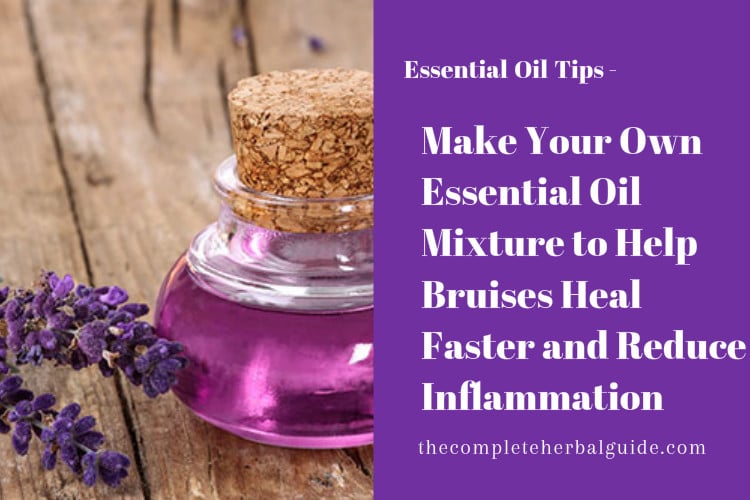
Top Natural Remedies for Pain and Inflammation
The bark of the white willow tree (Salix alba) has pain-relieving properties similar to aspirin. An ingredient in white willow bark, salicin, is converted in the body to salicylic acid (aspirin is also converted to salicylic acid once in the body). Salicylic acid is believed to be the active compound that relieves pain and inflammation.
Table of Contents
Many studies have compared white willow to medication or a placebo:

A University of Sydney study compared the effects of willow bark extract to refecoxib, a Cox-2 inhibitor pain medication. In the study, 114 patients received an herbal extract containing 240 mg of salicin, and 114 received 12.5 mg of refecoxib daily.
After four weeks, both groups had a comparable reduction in pain. A study in the American Journal of Medicine examined 191 patients with chronic low back pain exacerbation.
They were randomly assigned to receive a willow bark extract with either 120 mg (low dose) or 240 mg (high dose) of salicin or placebo. In the fourth week of treatment, 39% of people receiving the high-dose extract were pain-free, 21% receiving the low-dose were pain-free, and 6% of people receiving the placebo were pain-free. People in the high-dose group improved after the first week. Significantly, more people in the placebo group required pain medication.
Yoga for Back Pain
Yoga creates balance in the body through various poses that develop flexibility and strength. A study of people with chronic mild low back pain compared Iyengar yoga to back education. After 16 weeks, there was a significant reduction in pain intensity, disability, and reliance on pain medication in the yoga group. Benefits were also seen at three-month follow-up assessments.
Another study compared yoga, conventional exercise, and a self-care book for people with chronic low back pain. The back function in the yoga group was superior to the book and exercise groups at 12 weeks. Although there was no difference in symptoms at 12 weeks, at 26 weeks, the yoga group was superior to the book group. Find a yoga class near you.
- More about Iyengar yoga
- Other yoga styles
- How to start doing yoga
Bowen Therapy
Bowen therapy is a type of gentle bodywork that was developed in Australia by osteopath Tom Bowen (1916-1982). It is more widely used in Australia and Europe, but it has been growing in popularity in North America. Therapists for this therapy use a series of specialized “moves” using their fingers and thumbs. The moves typically involve the therapist pulling the skin slack away from the muscle, applying pressure, and then quickly releasing the tension. These moves are performed on precise areas of muscles where special receptors are located. Nerve impulses are sent to the brain, resulting in muscle relaxation and reduction of pain. The moves are not continuous – the therapist allows the client to rest for a few minutes between each move. A typical treatment is between 30 to 40 minutes.
Breathing Techniques
Breathing techniques that make use of the mind-body connection have been found to reduce pain. These techniques integrate body awareness, breathing, movement, and meditation. What is great about breathing techniques is that you can do them yourself at home at no cost.
Research: One study compared 6-8 weeks (12 sessions) of breath therapy to physical therapy. Patients improved significantly with breath therapy. Changes in standard low back pain measures of pain and disability were comparable to those resulting from high-quality, extended physical therapy. Breath therapy was found to be safe. Other benefits of breath therapy were improved coping skills and new insight into the effect of stress on the body.
Massage Therapy
When many people have backaches and pain, they first think of massage. Studies have found that massage may be effective for subacute and chronic pain. It has been found to reduce anxiety and depression associated with chronic pain. Massage therapy is the most popular therapy for low back pain during pregnancy.
Chiropractic
Back pain is one of the most common reasons people see a chiropractor. Doctors of chiropractic use chiropractic spinal manipulation to restore joint mobility. They manually apply a controlled force to joints that have become restricted by muscle injury, strain, inflammation, and pain. Manipulation is believed to relieve pain and muscle tightness and encourage healing.
A study published in the Spine Journal examined manipulations compared to simulated manipulations in 102 people with back pain and/or radiating pain. The researchers found that active manipulations were more effective at reducing acute back pain and sciatica with disc protrusion.
If you’re looking for a chiropractor in Anchorage, AK, there are many qualified professionals who can help address your back pain and improve your overall spinal health. These practitioners offer personalized treatment plans, which include spinal adjustments and therapeutic exercises. They help treat conditions like sciatica, neck pain, and sports injuries, aiming to restore mobility, reduce discomfort, and enhance your quality of life.
Alexander Technique
The Alexander technique teaches people to improve their posture and eliminate bad habits such as slouching, which can lead to pain, muscle tension, and decreased mobility. This technique was created by Frederick Matthias Alexander (1869-1955), an Australian actor who learned how to correct hoarseness in his voice by improving his posture. You can learn Alexander’s technique in private sessions or group classes. A typical session lasts about 45 minutes. During that time, the instructor notes the way you carry yourself and coaches you with verbal instruction and gentle touch.
Prolotherapy
Prolotherapy addresses damaged ligaments (bands of connective tissue that help keep bones attached) to relieve chronic musculoskeletal pain.
How does it work?
Tendons and ligaments in the back often do not heal completely after injury. The spine’s bones become less stable, leading to chronic pain. Prolotherapy involves the injection of a liquid solution into soft tissues such as ligaments and tendons.
This triggers local inflammation and the body’s natural healing response, repairing the weakened soft tissues and relieving pain. Unlike drugs, prolotherapy is thought to address the underlying problem.
After locating the areas that require treatment, the doctor inserts a thin needle with the solution into the area. There is often mild pain, but it can be reduced by using a local anesthetic. A typical course of treatment is 10 to 25 sessions for back pain. Since it is believed to repair the joint, no other treatment is necessary.
Tendons and ligaments in the back often do not heal completely after injury. The spine’s bones become less stable, leading to chronic pain. Prolotherapy involves the injection of a liquid solution into soft tissues such as ligaments and tendons.
This triggers local inflammation and the body’s natural healing response, repairing the weakened soft tissues and relieving pain. Unlike drugs, prolotherapy is thought to address the underlying problem. After locating the areas that require treatment, the doctor inserts a thin needle with the solution into the area. There is often mild pain, but it can be reduced by using a local anesthetic. A typical course of treatment is 10 to 25 sessions for back pain. Since it is believed to repair the joint, no other treatment is necessary.
Research: Preliminary studies have found that back pain, often involving ligament injury, responds particularly well to prolotherapy. The American Association of Orthopedic Medicine believes that prolotherapy is a safe and effective therapy for treating selected cases of low back pain and other chronic myofascial pain syndromes. Prolotherapy injections must be administered by a medical doctor (M.D.), osteopath (D.O.), or by a state-licensed naturopathic doctor (N.D.) in certain states.
Balneotherapy
Balneotherapy is one of the oldest therapies for pain relief. The term ”
Balneotherapy is one of the oldest therapies for pain relief. The term “balneo” comes from the Latin word balneum, meaning bath. Balneotherapy is a form of hydrotherapy that involves bathing in mineral water or warm water.
- A study compared bathing in mineral water to plain tap water using 60 people with low back pain. They found that mineral water containing sulfur was superior in reducing pain and improving mobility compared with tap water.
- A systematic review and meta-analysis published in the journal Rheumatology assessed Spa therapy and balneotherapy for low back pain. The researchers found that the data suggest beneficial effects compared to control groups. They concluded that the results were encouraging and that large-scale trials were warranted.
- Dead Sea salts and other sulfur-containing bath salts can be found in spas, health food stores, and online.
- People with heart conditions should not use balneotherapy unless under the supervision of their primary care provider.
Other natural therapies for back pain are:
- White willow bark
- Exercise
- Pilate’s
- Feldenkrais Method
- Hellerwork
- Trager Approach
- Rolfing
- Aston-patterning
- Reflexology
- Proteolytic enzymes
- Omega-3 Fatty Acids
- Back Pain and Dehydration
- Anti-inflammatory Diet






